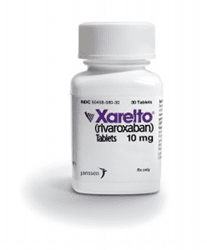
The anticoagulant Xarelto has raised a number of safety concerns in the short time it has been on the market. A number of lawsuits have been filed alleging that Bayer hid the risks of the drug, including an increased risk of bleeding. Now, a motion has been filed to consolidate the lawsuits into a multidistrict […]
 The anticoagulant Xarelto has raised a number of safety concerns in the short time it has been on the market. A number of lawsuits have been filed alleging that Bayer hid the risks of the drug, including an increased risk of bleeding. Now, a motion has been filed to consolidate the lawsuits into a multidistrict litigation (MDL).
The anticoagulant Xarelto has raised a number of safety concerns in the short time it has been on the market. A number of lawsuits have been filed alleging that Bayer hid the risks of the drug, including an increased risk of bleeding. Now, a motion has been filed to consolidate the lawsuits into a multidistrict litigation (MDL).
The U.S. Joint Panel of Multidistrict Litigation (JPML) should centralize cases in the Southern District Illinois court, the motion stated. Plaintiffs said that the court is an ideal venue because it has has experience with the recent MDL over Pradaxa, another new bloodthinner. In a hearing that will take place either late this year or early next year, the JPML will hear arguments on the motion.
Xarelto was approved in 2011 to reduce the risk of blood clots in patients who have undergone knee or hip replacement surgery. It is also approved for patients who suffer from atrial fibrillation. Xarelto, in addition to drugs such as Pradaxa and Eliquis, belongs to a class of drugs referred to as New Oral Anticoagulants. Pharmaceutical companies have been pushing these drugs as the next-generation medication to replace warfarin.
Warfarin is an older anticoagulant that requires monitoring and dietary restrictions. Xarelto and other new anticoagulants do not require this. However, there is no reversal agent to stop bleeding in Xarelto patients once it starts. Warfarin also carries a bleeding risk, but there is an antidote to reverse it.
According to the Institute of Safe Medication Practices (ISMP), there were 680 serious adverse event reports linked to Xarelto in the first quarter of 2013. Comparatively, there were 528 incidents reported for Pradaxa.
Reuters interviewed a number of doctors who indicated that they were hesitant to prescribe Xarelto, due to the risk of irreversible bleeding. This is especially a concern in patients with poor kidney function.


